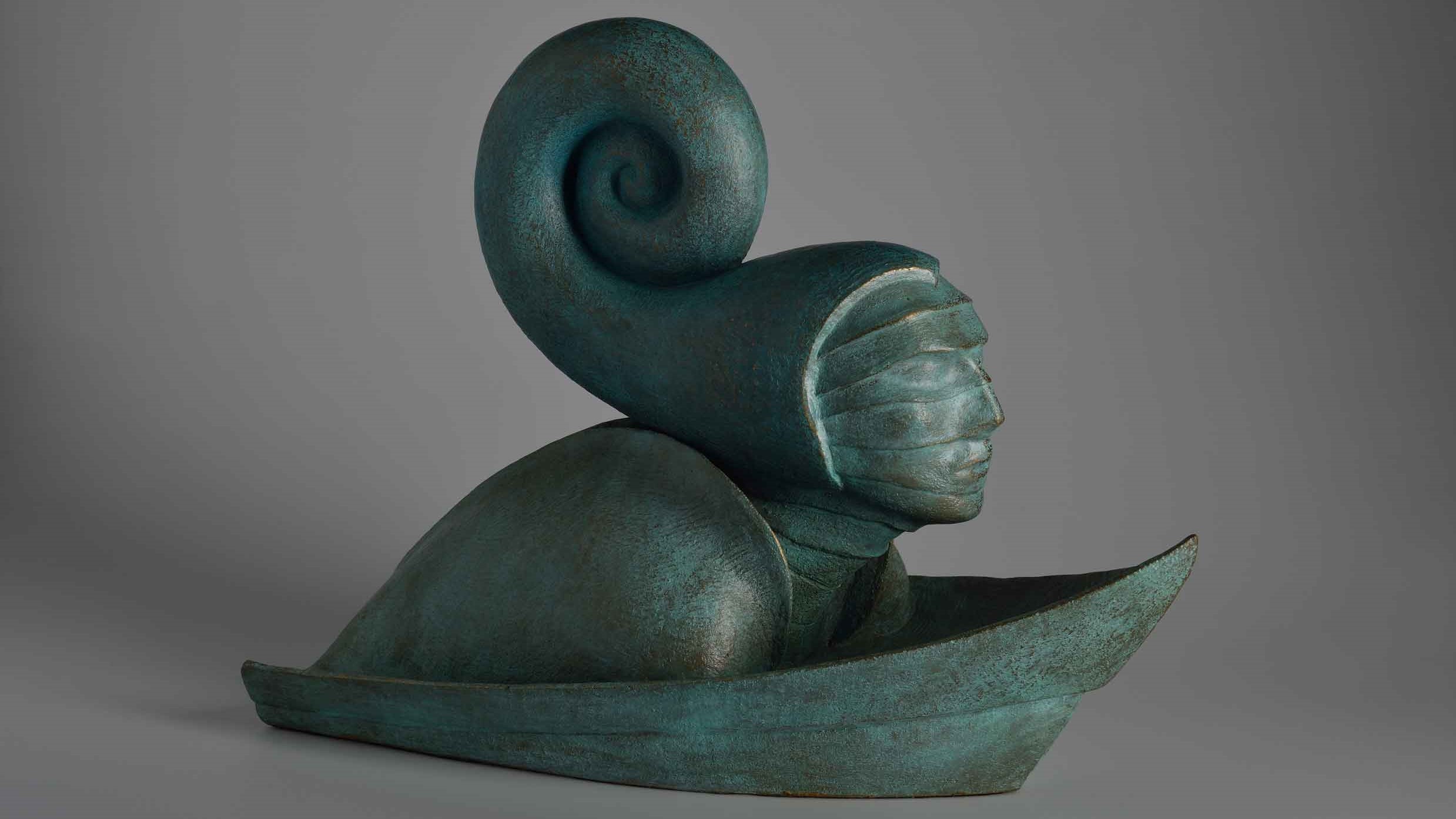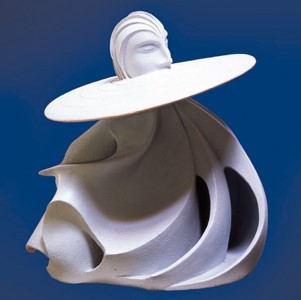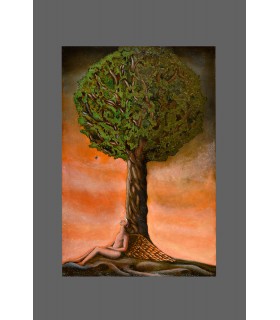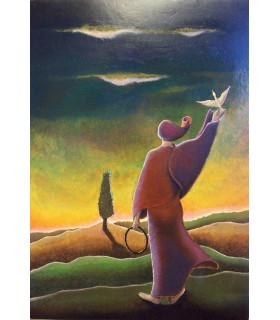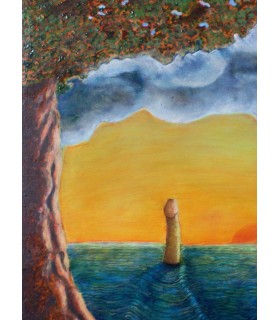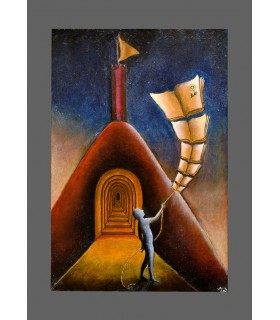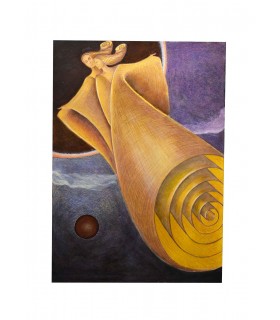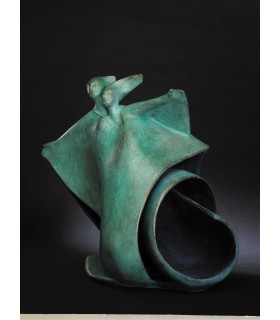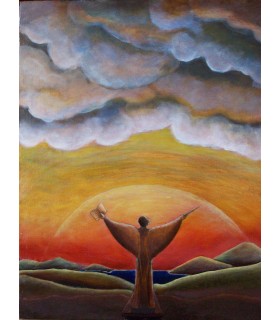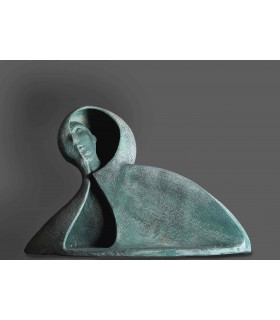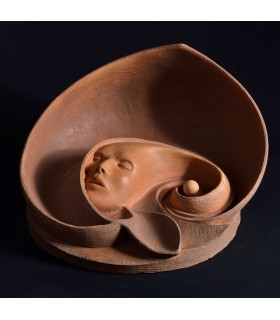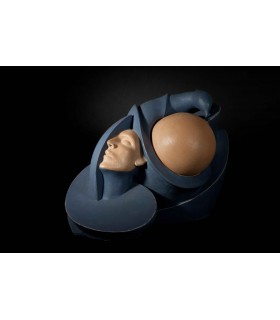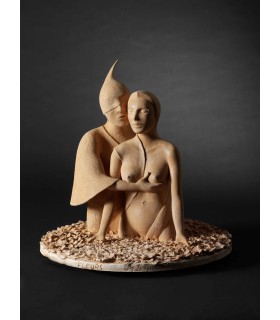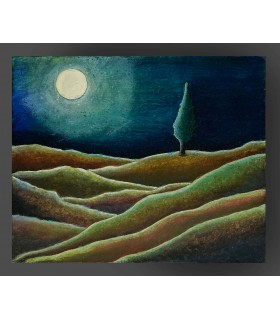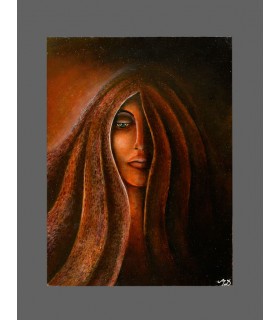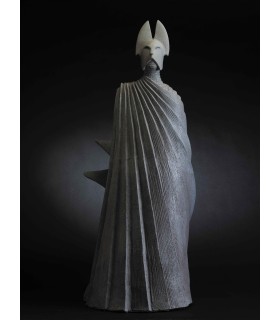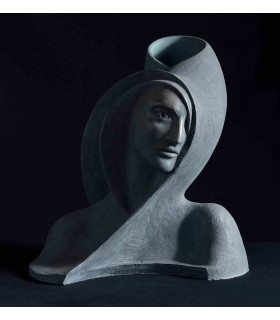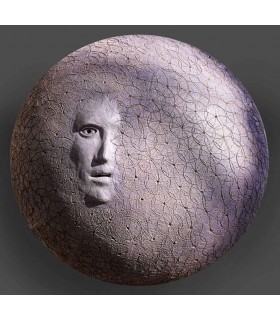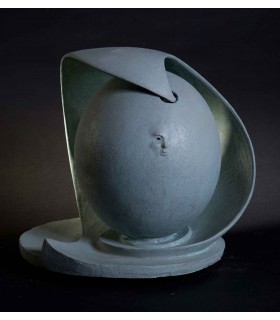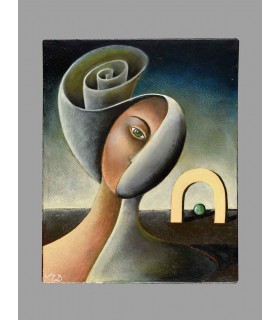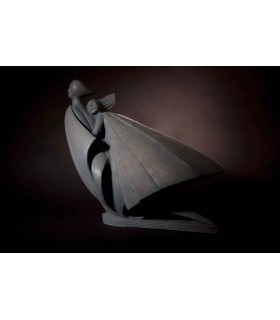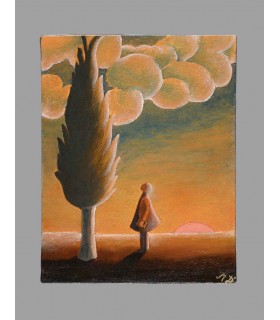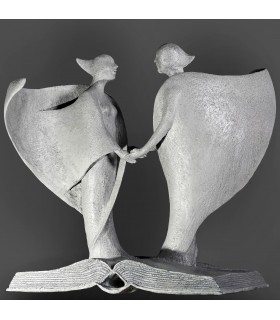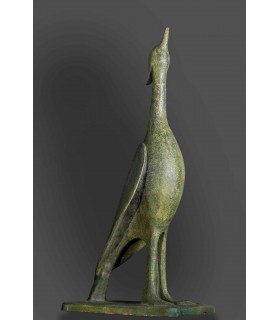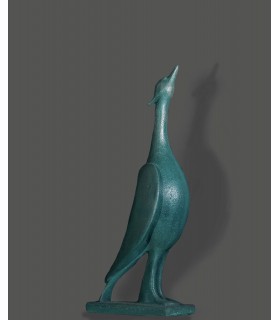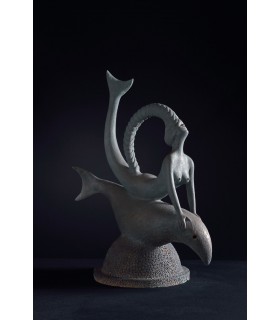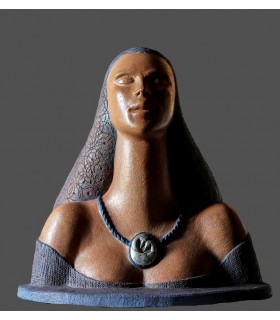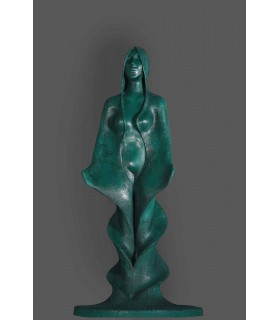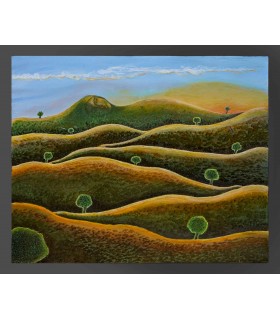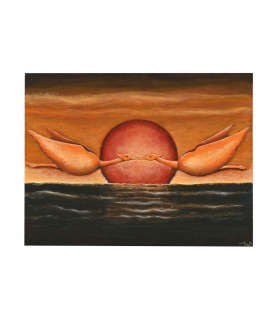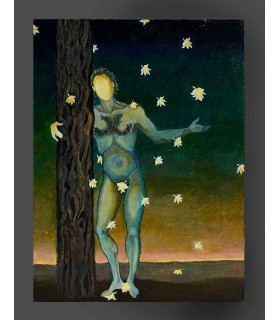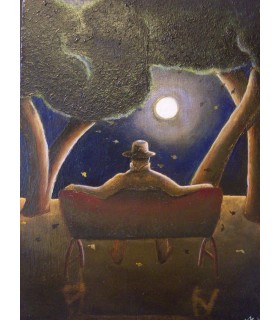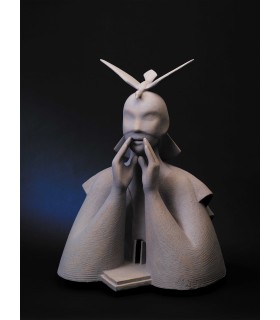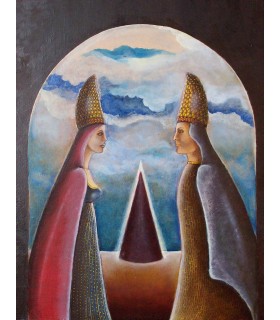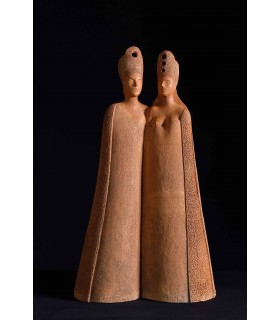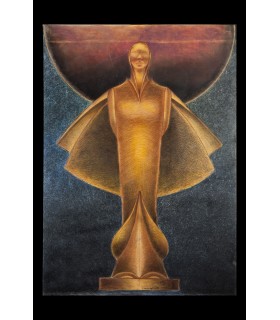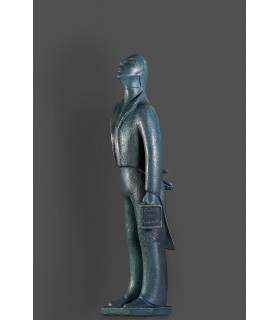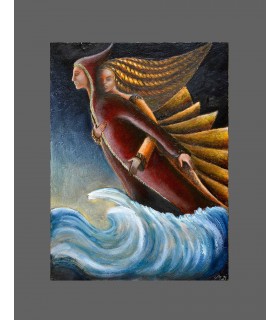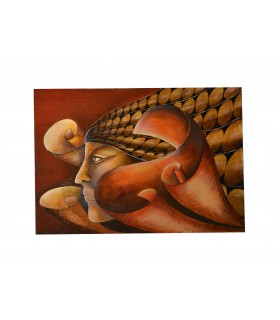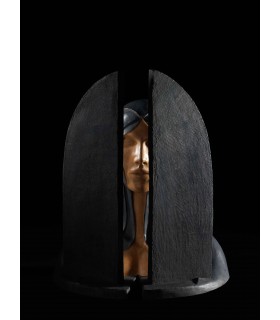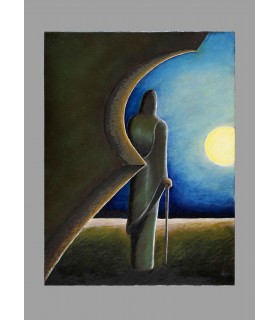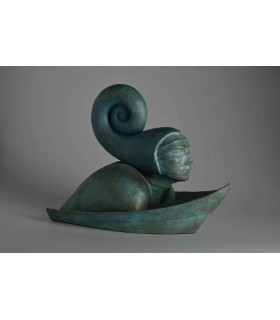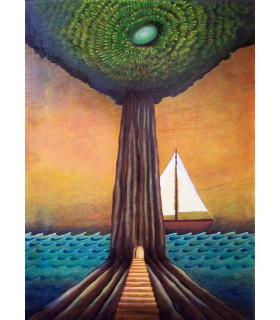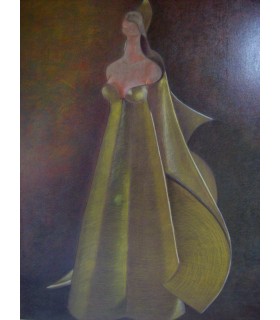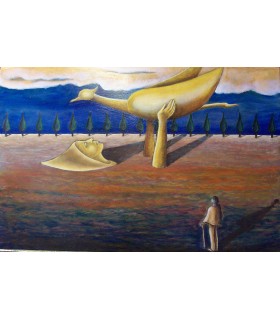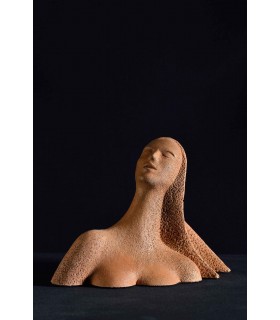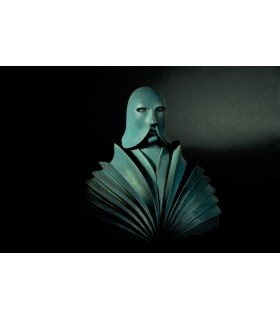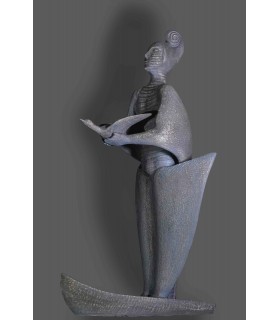About artist
Maurizio D'Agostini was born in Vicenza on February 3, 1946. At the age of fourteen he abandoned his regular studies and for four years he attended courses in engraving, embossing and drawing at the School of Arts and Crafts in Vicenza. These are the years in which he learned the rudiments of decoration for goldsmiths, in particular deepening the ornate design. 1964 - 1976 Choosing the path of experience "in the field", he completes his apprenticeship as an engraver-chiseler under the aegis of master craftsmen of the great Vicenza tradition. It is thanks to this fundamental journey from workshop to workshop that his hand becomes more secure, and allows him to grow in the technique of engraving with a burin. In the two-year period 1967-68 he attends at the School of Arts and Crafts of Vicenza the painting courses of the artist Otello De Maria: an interesting opportunity to look beyond the boundaries of goldsmith's craft. In 1969, he opened an engraving and chisel workshop, guaranteeing himself with economic and creative independence the possibility of deepening his research between craftsmanship and art. While he makes his first experiences as a teacher for some young apprentices, his attention moves decisively towards the world of chalcography. He executes numerous silver plates by burin and, with a series of intaglios produced in limited edition by the stamperia d'Arte Busato in Vicenza, he has his first successes with the city's collectors. In 1978, again in Vicenza, an exhibition at the Pozzan Studio gathered together the work of this decade: engravings on silver and intaglio that demonstrated how the burin had become D'Agostini's principal means of expression. And it is precisely with the burin that the artist begins to make his first sculptures: small sculpted stones accompany his contemporary research into the modelling of terracotta. Between 1969 and 1975 there is a fundamental experience that accompanies and justifies this creative reawakening: D'Agostini acts with the theatrical company "Gli Istrioni" of Otello Cazzola. The theater, the stage, reflecting through body and voice Molière, Shakespeare, Goldoni, Tennessee Williams, Edward Albee, allow the artist to become aware of his potential, while the severity of the master-director transmits a rigorousness and discipline that will characterize his later expressions. The theatrical adventure ends in the mid-seventies because D'Agostini's path is that of matter; but the artist will never stop reflecting on a possible union between actors, scenography and sculpture 1977-1990
In the two-year period 1977-79, D'Agostini is master of burin engraving for the evening courses of the Scuola d'Arte e Mestieri in Vicenza; his work as an artist begins to be appreciated thanks to the personal exhibitions he organizes and the collective exhibitions in which he participates.
In the first three months of 1982 he travels through the United States, staying for a period on the island of Assateague, in Maryland. The island is a natural park where horses descended from Spanish specimens, survivors of a shipwreck occurred three centuries before, live in a wild state. This place, full of suggestions, represents a very important stage in D'Agostini's path; the engraving "The shell of Assateague" (1982), donated to the Museum of Art and Culture in Maryland. (1982), donated to the museum of the island, opens a fertile creative season, in which also sculptures and bronzes acquire full strength.
In 1984 he met the French writer Léo Gantelet, who invited him to exhibit in Annecy. This exhibition starts a series of exhibitions in many French and Swiss cities (Annecy, Grenoble, Geneva, Fribourg, Renans, Montreux, Honfleur, Deauville) and long stays in Haute-Savoie, Provence, Brittany and Normandy, during which the artist sets up some ateliers to sculpt the stones that those places offer him.
In 1987 he held a course of engraving at the International Center of Graphic Arts in Venice, with which he also collaborated by making some folders of engravings and in the same year he made the engraving "The Tree of Life", image-symbol of the sixth edition of the competition "Young people meet Europe", organized by RAI. The search of Maurizio D'Agostini is by now totally turned to the sculpture, but alive it remains his interest in the comparisons of other artistic manifestations. The sculpture "Il tempo" (1985) becomes the symbol of "Laboratorio 1", research institute between art, economy and human behavior, created by Giulietta Cozzi in 1988. With "Laboratorio 1" D'Agostini will collaborate to the realization of an itinerant theatrical representation that, involving scenography, music, body expression and recitation, constitutes the artistic synthesis of the experimental research entitled "The jewel as instrument of knowledge". With the sculpture "The Knight of the Future" (1988), created for Palazzo Lares in Vicenza, an interesting artistic association with a well-known Milanese architect began. Collaboration that will continue with the realization of a monumental sculpture for the Galleria Crispi in Vicenza. Characterized by the artist's new attention to large-scale sculptures, these experiences are supported by "Futura Progetti" of Vicenza, promoter of works that combine architectural intervention with the art of sculpture. 1991 - 1997 The years between 1991 and 1997 are extremely productive and full of important contacts and public relations. After the great exhibition at the Archivi Napoleonici in Vicenza, the monumental sculptures on commission are born: "Il sovrano dell'isola" (1991), "La casa del vento" (1992), "Elevazione" (1992), "L'astronomo" (1994), "L'annunziatore" (1996), "L'educazione dell'anima" (1997), "Il nocchiero" (1997). All these works are realized in the stone of S. Gottardo and S. Germano of the Berici Hills. In 1994 D'Agostini consecrated him to the "Sassi del Brenta". Of the one hundred pebbles he sculpted, fifty were made in his atelier in Honfleur, in Normandy; for this reason they will have the title in French: a way to honor a place and a region so loved by the artist. Over the years, D'Agostini has punctually gone to collect those stones in the river bed, choosing them carefully one by one; this "treasure hunt" has always taken place at the first light of dawn, with an almost sacred ritual. The one hundred small works were commissioned by Giuseppe Calgaro, a great friend and patron of the artist, president of Balestra, an ancient and renowned goldsmith's shop in Bassano del Grappa. The "Sassi" will be immortalized in "L'oro del Brenta", A splendid trilingual book, published by Balestra. Even though it is a limited edition, this book has crossed national borders, arriving in the most distant countries. In these years, important exhibitions were held, organized and sponsored by foreign public institutions: in Switzerland, in Montreux (1991); in France, in Lyon (1993), organized by the Italian Cultural Institute of that city, and before that in Seynod (1991), near Annecy. The town hall of Seynod buys a very significant work, "Cursum Perficio" (1990), a sculpture in moscatella stone from Costozza dei Berici, which is placed in the ceremonial hall of the Hotel de Ville. It is a period of long stays beyond the Alps, where D'Agostini has considerable success. Moreover, France is his adopted country, where he weaves deep ties and strong friendships that will be consolidated over time, all meetings that will prove decisive for the artistic and creative future of the artist. 1997 closes with the great retrospective exhibition at Villa Cordellina Lombardi in Montecchio Maggiore: fifty sculptures and seventy drawings. Financed and realized by the Department of Culture of the Province of Vicenza, the exhibition is a great success with the public and the critics. 1998 - 2004 1998 also begins with a prestigious exhibition, held in the headquarters of the cultural association "Le manoir de Cologny", on the hills of Geneva; on that occasion, "Pourquoi - Perché" (Why?) will be presented, a collection of thirty poems by the poet Léo Gantelet, interpreted by as many pastels by D'Agostini; a beautiful publication (Editions du Choucas) created by two hands, the result of a long-standing friendship and deep intellectual complicity. In addition to the book, this creative union will also be transformed into an itinerant show, with original music, reciting voices and projection of the drawings on a large screen; the play will make its debut in December 1997, at the Auditorium Canneti in Vicenza, in collaboration with the Assessorato ai Gemellaggi (Vicenza - Annecy). The other representations will be held in France, at the Galerie Bagnorea of Annecy; in Switzerland, in Territet, in the property "La Valletta, chez Ruttimann". Back in Italy, the show is promoted by the Lions Club of Arzignano, and realized at the Hotel Michelangelo of Arcugnano (Vicenza); then, always on the Berici Hills, at Villa Pigafetta Camerini of Montruglio, where it is enriched by the artistic contribution of the dancer and choreographer Thierry Parmentier. The years from 2000 to 2004 were years of untiring study of the fundamental questions of the human being: the inner world, the relationship with nature, the gaze towards the universe.
This research is nourished by a continuous dialectical comparison between spirit and matter, between the attempt to probe the obscure abysses of interiority and the commitment to a rigorous exercise of rationality, between the elaboration of the concrete experiences of life and the yearning to unveil the mysteries of the cosmos.
This is how clay takes shape, among others: "The Silence" (2000), "Cosmic Flight" (2001), "Triumph of Dawn" (2001), "The Cosmic Man" (2001), "The Solitary Navigator" (2001), "The Man Who Reads His Own Hand" (2001), "Birth of Cosmic Man" (2001), "The King and the Queen" (2002), "Birth of Venus" (2002), "Saturn" (2002), "Zeus" (2002), "Sekhmet" (2002), "The Queen" (2004), "Lighea" (2004). These sculptures inaugurate a new creative phase: from this moment, the artist begins to paint his works with oils and acrylics, as the ancients did. In this period, D'Agostini exhibits in France, at the Casino Royal of Evian and at the Galerie d'art Silvie Platini, in Veyrier du Lac. The last great personal exhibition of the artist dates back to 2002. Part of the exhibition was set up in the Palazzo Antico Ghetto and part in the Chiostro del Beato Luca Belludi, inside the Basilica of S. Antonio, in Padua, and was financed and promoted by the Department of Culture of the Province of Padua. 2005 - 2008 Period of study, research, travel and monumental sculptures. In 2005 they see the light works like: "Venus" (IV planet) and then "The inspired muse", "The house of the soul", "The wings of freedom" and the great bas-relief "The spring". For "The Wings of Freedom" the destiny will be more glorious, it will have a privileged path. Discovered by a couple of wealthy American collectors and art lovers, the spouses Judith and Douglas Krupp of Boston, during the period of the great exhibition in the Basilica Palladiana (2006) in Vicenza; 38 cm. high at the origin it will become the following year thanks to the purchase of the Krupps a colossus of blue bronze 230x360x180 cm. high weighing 13 quintals and since then it will be called "Freedom wings". Leaving for Boston in February 2009, will live in the park of the villa Krupp. "Freedom wings" or "The wings of freedom" in 2007 also became the logo of the biennial festival "M.S.P. Marvellous Sound Project" in Mossano (VI), an international festival of sound and peace. In 2005 he made an important trip to Ostend and Knokke Heist (North Sea) to revisit museums and art galleries. In the same year comes out a rich monograph distributed in France by the publisher Bernard Paccot for "Editions de l'Astronome". D 'Agostini then stays in Paris to do research on the Pere Lachaise cemetery and was struck and inspired by the beauty of the place and the evocative and historic monumental tombs. In 2006 he realized the big sculpture in white stone from Vicenza "La casa del vento" (The house of the wind) second version, commissioned by the Hotel Vergilius in Creazzo (VI) and placed in the garden near the entrance. 2007 - Large sculpture "Elevazione", second version in variegated yellow stone from Nanto, placed in Costabissara (VI) private collection. Collective exhibition in Forli: at convent of S. Girolamo "The animal world of nature" organized by the Bargellini Magi Museum of Pieve di Cento (BO). 2008 - Two more planets see the light: "Neptune" and "Mercury": one is still missing, "Uranus", which is being worked on, then the planets will finally be represented all together in a prestigious exhibition on April 30, 2009 at the Foundation G.B. Cima da Conegliano. 2008 is also the year of the "Premio Mezzalira" in Vicenza, a biennial event. The sculpture "L'uomo delle stelle" is chosen to become the recognition of the characters of the Veneto region become famous in Italy and abroad. Collective "Reviews" to the House of the Palladio. Twenty years of acquisitions in the collection of contemporary sculpture of the Municipality of Vicenza. Long trip in Uzbekistan (The way of the silk) to Samarcanda, Bukhara, Khiva, Nourata: the Asian influences in the colors and in the architecture of the places will be of great inspiration for the realization of the sixth planet, "Mercury". D' Agostini enlarges his studio and "opens" a school of sculpture that will be held every three months. The desire to transmit experiences, techniques and philosophies of life to others becomes a stimulus that gives much satisfaction. The great monumental work "The Argonaut" was born, started at the end of 2007 and completed in 2009: a bronze colossus 450x360x290 cm high, weighing 25 quintals. Commissioned by INOXTECH of Lendinara (RO), industrialists of great sensitivity, art promoters and patrons. "The Argonaut" after a temporary location at the entrance of the Vicenza Fair, was placed permanently on the traffic circle at the entrance of the city of Lendinara. 2010 - 2019 D'Agostini participates in six group exhibitions and realizes personal exhibitions in Ponte in Valtellina (SO), in Cortina D'Ampezzo (BL) and at the Biennale d'Arte di Asolo (TV). In 2013 Veneto Banca acquires the patinated terracotta sculptures of "The Seven Planets" and with these works he sets up an exhibition in the main Italian offices of the Bank: in Bari and Fabriano, followed by Verona, Verbania, Vicenza and other cities.
Since 2013 his graphic and sculptural works have been on permanent display at the Galerie Denis Lacaux in Saint-Remy de Provence, France. 2014 is the year of great change. D'Agostini begins a "new" artistic path, that of "oil painting". In the winter of 2014, D'Agostini spends a period of time in France, in Saint-Remy de Provence, in the house-atelier of his friend Patrick Persini, a famous French painter, who convinces him to confront also with this artistic genre congenial to him. D'Agostini begins to paint and to dedicate himself daily to oil painting, also following the indications given by his friend on the ancient oil technique of the Flemish painters. It is a path towards an expressive form once far from his aspirations, but that is an integral part of his personal artistic research, and that today represents his new and characteristic imaginary world. To this day, Maurizio D'Agostini lives in his home-atelier on the slopes of the Berici Hills, in Costozza, a small village surrounded by greenery, rich in history and beauty. Here, every day he pursues, through the study and processing of matter, his deep research on art and on the existence of the human being.
